From time immemorial, women all over the world have been trying to be beautiful. It is known that the canons of beauty sometimes differ significantly among different nations. Since ancient times, one of the prerequisites for female attractiveness in India was the presence of thick, lush, well-groomed hair.
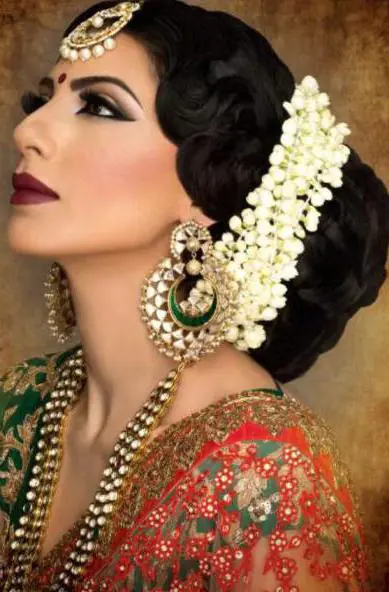
Since ancient times, Indian women's hairstyles have been famous for their simplicity and simplicity. Traditionally, the beauty of Indian girls' hair was based primarily on their health and grooming. Mostly women preferred to smoothly comb their hair back from the forehead, after which it was laid at the back of the head or lower, on the neck, in a beautiful bun, reminiscent of a voluminous hemisphere or snail. Indian hairstyles were always decorated with pearls or flowers. All kinds of threads, combs, hairpins, rings, hoops, ribbons and beads were also used as decorations.
Indian hairstyles, with their combination of simplicity and luxury, give an incredible femininity to the appearance, and therefore are very popular among modern beauties. The feminine look of Indian women is known for its uniqueness. The presence of bright outfits, exotic hairstyles with expensive jewelry and henna patterns make the appearance of Indian beauties special. Indian-style hairstyles today are preferred by ladies who want to emphasize their individuality and natural beauty, as well as give their appearance special sophistication and sophistication.
From the depths of history
The culture of India is one of the most ancient in world civilization. It is known that for many centuries this state was an English colony. And yet many indigenous customs and traditions have been preserved here.
From time immemorial, the population in this unique country has been divided into castes, whose membership is encrypted both in outfits and in hairstyles and jewelry. In ancient times, it was possible to determine which social stratum the owner belonged to by the way her hair was decorated and styled.
A traditional feature of Indian culture, which has long been sacredly revered by both men and women, is the cult of the body. From childhood, a reverent attitude towards beauty is instilled here. The main thing that Indians pay attention to when dressing or doing their hair is harmony, symbolism and peace of mind.
Traditional features of Indian hairstyles
Women in this country have long been very careful about caring for their hair. There are a wide variety of Indian hairstyles available.
Usually, married Indian women wore their hair in a braid and laid it along their back. Girls who had yet to get married were, on the contrary, supposed to collect their hair at the temples, braid it in pigtails or twist it in a knot at the crown.
Regardless of what marital status a woman occupied, her hairstyle always included jewelry that was woven into her braids. Indian women's hairstyles, regardless of the social status of the beauty, were distinguished by their simplicity.
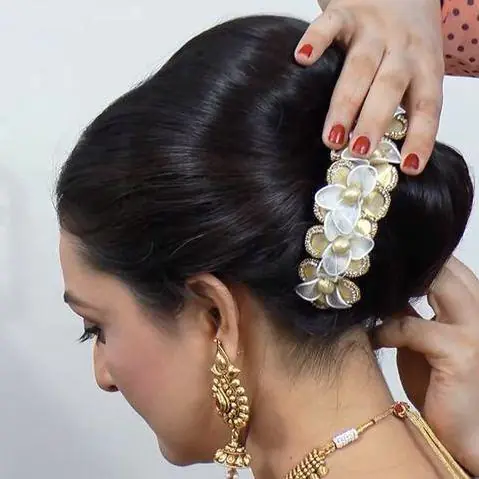
To add a large amount of volume to hair smoothly combed and gathered at the back of the head or closer to the neck, rollers were used, which should be placed under the bun. The length of the hair reached the waist or even the hips. The procedure of fumigating hair with various incense was obligatory. Usually sandalwood was used for this purpose.
It is known that Indian women had quite a difficult time managing strands of such length. In ancient times, high hairstyles that looked like temples were very popular. According to legend, gods lived in women's hair. That is why jewelry was often used in Indian women's hairstyles - they were associated with offerings to the gods. Women braided their hair and styled it with unusual plaits. On holidays, pearl, gold or silver threads were necessarily woven into the hair, and precious stones were inserted. It was quite difficult to keep such a mass of hair on the head, so the hairstyles were “reinforced” with strong thread. In addition to braids, Indian ladies often used plaits, which were arranged like snake-like baskets. This type of hairstyle could be used by married women.
How to do an Indian hairstyle?
According to experts, creating such a hairstyle is no more difficult than any other. But we must take into account that Indian hairstyles are made for long hair. Medium length strands are also suitable for this. Girls with short hair or bangs will have to abandon their planned look. An Indian style hairstyle can easily elevate any woman's appearance, giving it tenderness and charm.
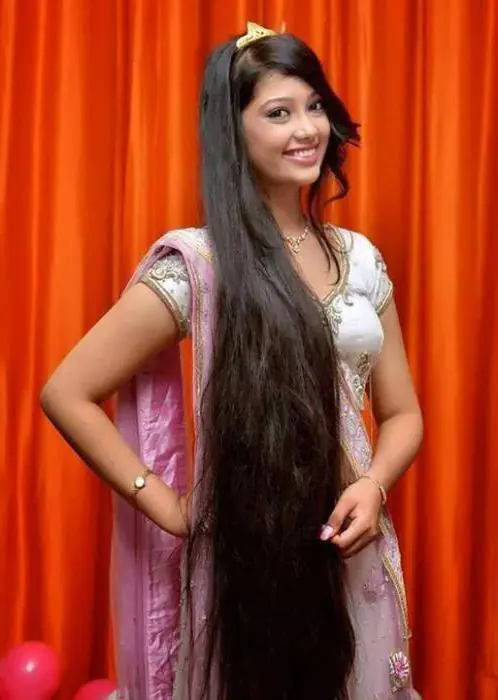
We choose grace, simplicity and naturalness
Today, more and more often, women of different ages, who want to emphasize the naturalness of their image, prefer Indian-style hairstyles. The beauty and well-groomed hair is increasingly valued and becomes the real pride of many owners. Simple and at the same time incredibly sophisticated Indian hairstyles are ideal for both holidays and everyday wear. With such a hairstyle, the lady will, without a doubt, look original and graceful.
Festive and everyday variations of Indian hairstyles are very diverse. Creating a daily one will not require much time or special effort. Those who want to create a festive Indian hairstyle will have to resort to outside help. The following article offers the most common options.
How to make an "Indian bun"?
The hair is carefully combed back. Then they should be gathered at the bottom of the back of the head in the form of a ponytail and secured with a colorless elastic band. A narrow bun is taken from the tail and braided. Next, at the base of the tail, use pins to secure the hairdressing sponge in the shape of a ring.
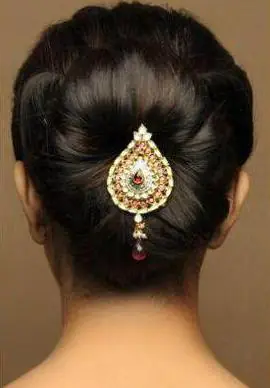
The hair is carefully styled and secured with hairpins over the sponge. The ends are hidden inside. The braid is randomly wrapped around the bun several times. Its end is secured under the hair using bobby pins.
How to create a festive Indian hairstyle?
Hair is carefully combed. A wide strand above the forehead is separated using a horizontal parting, divided into two equal parts, which should be braided with a rope, securing the ends with thin elastic bands. Next, the bulk of the hair is collected at the back of the head along with plaits. Then you should separate one of the wide side strands. After this, an oval hairdressing sponge is secured over the hair, which is lifted and pinned over the sponge so that it becomes invisible.

Next, the ends of the strands are carefully straightened and separated into small bundles with your fingers, which are twisted into small flagella. Each is secured in the form of a small loop at the back of the head on top of a volumetric bun. The remaining wide strand is braided. Holding it by the end, the braiding links should be carefully relaxed to give the braid an openwork look. The end of the braid should be fixed, hidden under the hair. Tie a braid around the bun and secure with hairpins. The hairstyle is decorated with small pearls.
Fashion of Ancient India
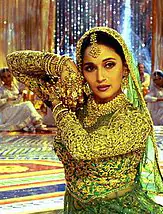
The hairstyle of the ancient Hindus was influenced by two main factors: climatic conditions and caste. Men's hairstyles did not differ in variety and complexity of shapes. It was combed back hair, curled in waves, with curls at the ends.
Kshatriya warriors shaved their heads, leaving a small tuft of hair in the center of the head. Perhaps that's why they were called shikhandi - forelock (from the word “shikhanda” - forelock).
Hairstyles of Ancient India
Sikhs wore long hair, styled in oblong buns, secured above the forehead. The buns were made from a braid or a plait. One of the commandments obliges Sikhs not to cut their hair from birth to death.
The warriors also wore a long lock of hair, curled into a curl and hanging down on the right side. The dervishes did not cut their hair; they wore it loose to their shoulders.
Among the Brahmins, shaving the hair on the head was considered a great shame. This ritual could replace the death penalty.
Prisoners' hair was shaved off as a sign of shame, leaving five tufts sticking out in different directions. Men, having entered the period of maturity, grew mustaches and beards. Beards were dyed with vegetable dyes and smeared with aromatic potions and oils.
Beards and mustaches were curled. Rich nobles, in order not to spoil the curls on their mustaches or beards, wore headbands at night - gibbets. Sikhs wore their beards twisted or in a special net. On especially special occasions, the beard was worn out.
Children and young men did not cut their hair; they wore it loose over their shoulders. Women's hairstyles, like men's, were very simple, regardless of class.
Women combed their hair smoothly back from the forehead and placed it at the back of the head or low on the neck in a bun such as a snail or a voluminous hemisphere. A pad or animal fur was placed inside the bundle - this gave the bundle stability.
In women's hairstyles on sculptures, reliefs, as well as in all descriptions that are found in literary works, the hair length reaches the waist and hips. Snake-shaped buns were the most common and were worn by married women.
Hairstyles were fumigated with the smoke of aromatic plants, most often sandalwood. There were many types of hairstyles. The braids laid horizontally resembled a pyramid, decorated with strings of pearls and flowers.
There was a belief that gods lived in women's hairstyles. Therefore, women often wore high hairstyles that resembled temples.
Hairstyles were also made from one or more braids. The braids were varied and of complex weaving. They were tied, laid or intertwined on the head, and tied at the base with a thin black thread for strength.
They used hairpins, combs, hoops, rings, ribbons, flowers, strings of beads made of precious and semiprecious stones, and pearls. In sculptures from the times of Mohenjodaro and Harappa, hairstyles with one braid are more common.
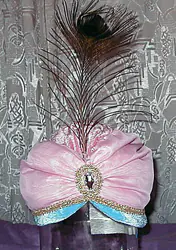
Hairstyles made from curled hair were done only by temple dancers - bayaderes. Spiral, tightly curled curls were located in a thick mass on the back. The hairstyles were complemented by curls on the cheeks.
Girls wore side braids, sometimes combing their hair to one side, passing it through a small tube, and braiding it with a plait. They did not wear bangs or short haircuts.
The hairstyle was thickly saturated with oils, which not only gave the hair shine, but also protected the scalp from the sun's rays. Sometimes the hair was tinted with vegetable dyes, giving it a copper tint. The dyes had medicinal properties and promoted hair growth.
Hats
The headdresses of the privileged castes, Brahmins and warriors, and the common population were of the same type. The difference was in the quality of the material. The main headdresses of men were a turban and a turban, which rose majestically above the forehead, while the ends of the hair remained open.
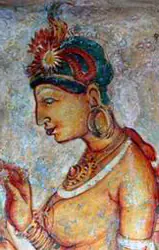
Rich people wore headdresses made of thin colored silks, gold and silver brocade, and linen fabric - mostly monochromatic. White, crimson and red colors of different shades predominated. Mohammedan Indians could also wear turbans of blue or yellow color, but made of paper, since wearing pure silk was forbidden to them by religion.
Sikhs wore red turbans. Those who visited the holy city of Mecca had the right to wear green turbans. The turban was rolled up from a long piece of fabric (6-7 meters), draped with folds in the shape of a high cone or a wide pipe. Often thin cardboard was placed under the material to maintain its shape.
The turban was a piece of fabric, but this fabric, unlike the turban, was laid in flat strands.
The turban and turban of rich dignitaries were decorated with precious stones, most often carnelian, amethyst, and sapphire. A brooch-sarpech was often pinned in front of the forehead, which held a bunch of feathers of a bird of paradise.
The hats of the common people were more modest, made from lower grades of fabric. In addition to these headdresses, men wore small velvet caps that resembled skullcaps, headbands, caps made of linen and felt, and caps similar to modern caps.
For women, the sari was not only part of the costume, but also served as a headdress. The end of the sari was thrown over the head, hiding the hair.
Women of all classes also wore transparent veils, airy veils, which were attached to the head with a hoop.
They wore headbands gracefully woven from threads, small caps embroidered with beads, sequins, glass beads, and scarves made of all kinds of fabrics.
All headdresses were distinguished by their elegance, high taste and subtlety of execution. But brides' dresses were especially skillfully made. They showed the boundless imagination of the masters.
As a rule, they were made of expensive brocade, embroidered with laces, metal plaques, and small and large gold flies. The addition included temple pendants made of pearl or coral threads, openwork scarves, and tassels.
In everyday life they wore cloth headbands. Bayaderes, dancers, and musicians wore elegant tiaras and wreaths of fresh flowers, leaves, and hummingbird feathers. They tied purple and shiny ribbons decorated with bells.
Decorations
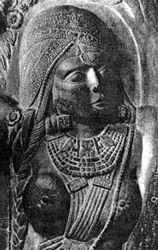
In ancient India, everyone wore jewelry - children, teenagers, women and men. The rich decorated their hats with jewelry. Graceful brooches, hammered clasps, pendants made of beads, pearls, precious and semi-precious stones in gold or silver frames complemented the costume. They wore beads, chokers, necklaces, medallions, and chains.
Rings and earrings were worn by men of all castes. The distinctive sign of the Brahmins were gold earrings. By law, pariahs could only have jewelry made of iron.
Women wore a lot of jewelry, especially on holidays. The partings of the hairstyles were covered with longitudinal threads of beads, which ended on the forehead with a round plaque or decoration in the form of a flower or moon. Young women wore jewelry in the form of a single stone or ring in their left nostril. But widows could not wear this decoration.
On special occasions, people decorated themselves with garlands of fresh flowers, bird feathers, plant leaves, roots, and fruits.
Cosmetics
All segments of the Indian population inked their eyebrows and eyelids with charcoal, and lined them with antimony and basma. The face and neck were covered with whitewash and the cheeks were reddened. They gilded their lips and covered their teeth with brown paint.
Women painted a small spot in the center of their forehead - it was called tilaka, or tilak. In ancient times it denoted a sign of caste or sect.
It was applied with sandalwood, cinnabar, and saffron powder using a brush. Different castes had their own signs, special shapes and colors. This sign has always distinguished married women. Among the population, it was customary to paint the ends of the fingers and toes orange. Hair partings were also orange or red.
Sometimes lips painted with red lipstick were marked with a missy line using black powder.
In India, great importance was attached to aromatic substances: temples and homes were fumigated with the resin of tropical trees and myrrh. They believed that this drove away evil spirits. Along with gold, incense, which was burned in temples, was valued. Incense is popularly called “incense of the gods.”
There was a real cult of aroma, so during the festivities, flocks of white doves were even released, whose wings were smeared with musk, incense tree resin, jasmine oil, lavender, amber, and aromatic vinegar.
source - hairstyle history (?)
One of the ancient cultures of world civilization is Indian. A great people who have preserved their traditions and rituals. The feminine appearance of Indian women is very distinctive. Bright outfits, henna patterns, exotic hairstyles with expensive jewelry make the appearance of Indian women special.
It so happened that until now, the entire population in the state is divided into castes. Belonging to them is encrypted in clothing, jewelry and hairstyles. Not everyone gets the chance to come to this country and see with their own eyes the richness of Eastern culture, but Indian films can reveal the secrets of women's hairstyles.
From the depths of centuries
Despite the fact that India was a British colony for many years, the indigenous people cherish the culture and customs of their country. The cult of the body is something that both men and women treat most reverently. Harmony, peace of mind, symbolism are the main points that people pay attention to when dressing and doing their hair.
Beauty, male and female, is in the category most revered since childhood. Men, like women, wore long hair and beards. It was common to paint them in different colors. Most often they preferred white, blue, and green shades.
Very often the heads were decorated with braids and then covered with headdresses similar to the ancient Persian miter. Women took more care of their hair and had many more hairstyle options. Those who were married braided their hair and laid it along their back. Girls who had yet to get married, on the contrary, collected their hair in the temporal areas, braiding them and twisting them into a knot on the parietal part, closer to the forehead. Regardless of marital status, all women used jewelry that was woven into their braids.
Neither boys nor young men had their hair cut. That's why they walked around with their locks loose. Regardless of class, women's hairstyles were simple. Smoothly combed hair was collected in a bun at the back of the head or closer to the neck. To add large volume, rollers were used that were placed under the bun. Hair length could reach the waist or hips. The fumigation procedure was mandatory. Usually sandalwood was used for this. It was not easy to manage such long strands. High hairstyles that looked like temples were popular.
This is not surprising, because legend says that gods live in women's hair. Therefore, the use of jewelry was associated with offerings to them. The braids were woven into unusual strands and styled. Strings of pearls, precious stones, gold and silver were mandatory for the holidays. It was not easy to hold such a large weight of hair on the head, so the entire hairstyle was “reinforced” with a strong thread. In addition to braids, they often used plaits, which were laid in snake-like baskets. This type of hairstyle was used by married women.
Youth hairstyles in modern India
Indian hairstyles have been adopted by modern hairdressers. Imitating Indian women, they change their hairstyles several times a year. Simple and uncomplicated, they emphasize feminine beauty and naturalness. On holidays and special occasions, special attention is paid to hairstyles. The hair is decorated with pearls and flowers, jewelry and hoops. Everything should be only the best and most beautiful. Color – preference is given to a black tone; you can give the strands a copper tint. Indian women apply special oils to protect their hair.
The peculiarity of modern hairstyles in the Indian style is that if the owner has short hair or bangs, then it is not suitable for creating an Indian look. Hair should be long, thick and well-groomed. Preference is given to hairstyles that resemble knots and baskets.
You can use hairpieces if the length is not enough. They are located closer to the neck. The knot is always decorated with finely woven braids and openwork ornaments from them. Jewelry is chosen depending on the occasion. For every day they can be dim and modest, but for the holiday all restrictions are lifted.
If a woman has long and medium hair, then this must be emphasized. It is enough to collect the side strands of hair from the back, giving the entire volume a wavy look. Allow your curls to fall freely over your shoulders, they will luxuriously decorate your look. Traditional Indian jewelry - necklaces going down to the forehead will complete the image of an Indian beauty. Traditionally, the decoration of the head and earrings is done in the same style; the same jewelry for the neck would not be out of place. Ribbons, small flowers, all this is welcome in Indian hairstyles.
Hairstyle in Indian style - choosing femininity
More and more often, women of different ages come to the hairdresser and ask for Indian-style hairstyles. Attention is focused on the naturalness of the female image. The well-groomed and beautiful hair comes to the fore and becomes a real woman's pride. Simple and, at the same time, sophisticated hairstyles are perfect for a holiday, ideal as a hairstyle for the bride. By choosing a hairstyle like this, you can be sure that it will be unique. After all, the festive variations of Indian hairstyles are endlessly diverse. A casual braid or a lush bun at the back of the head will certainly add grace to a woman.
Owners of thick medium or long hair have a happy opportunity to try on unique Indian hairstyles. It doesn't take much time to create a casual one. And if you want to make a festive one, you may need outside help.
Indian bun
- Carefully comb your hair back.
- At the bottom of the back of the head, gather with a ponytail, securing with a colorless elastic band.
- Separate a narrow bunch of hair from the tail and braid it.
- At the base of the tail, secure a hairdressing sponge - a ring - with pins.
- Carefully lay your hair over it, securing it with hairpins. Hide the ends inside.
- Wrap the braid around the bun randomly several times and secure the end with bobby pins under the hair.



